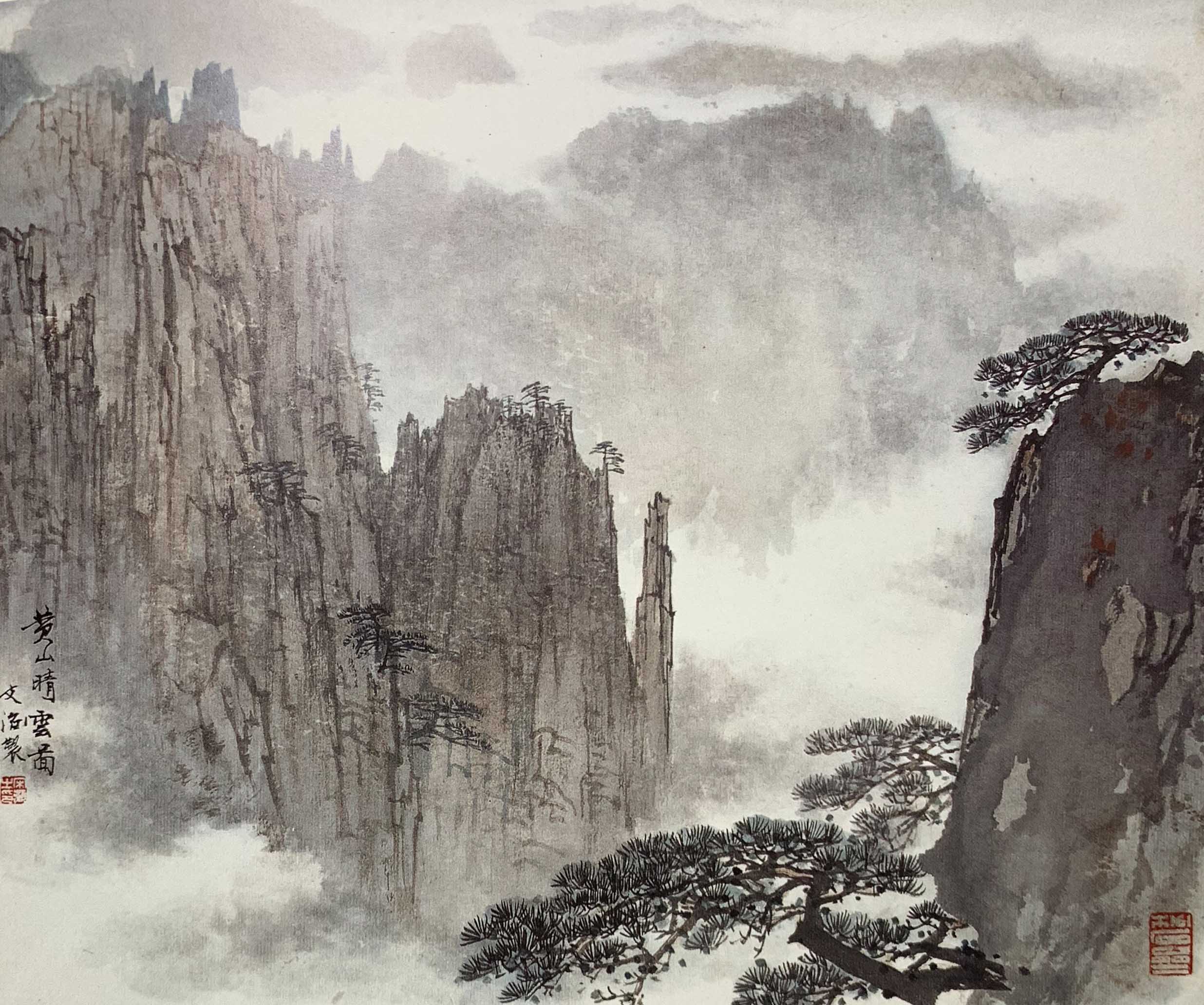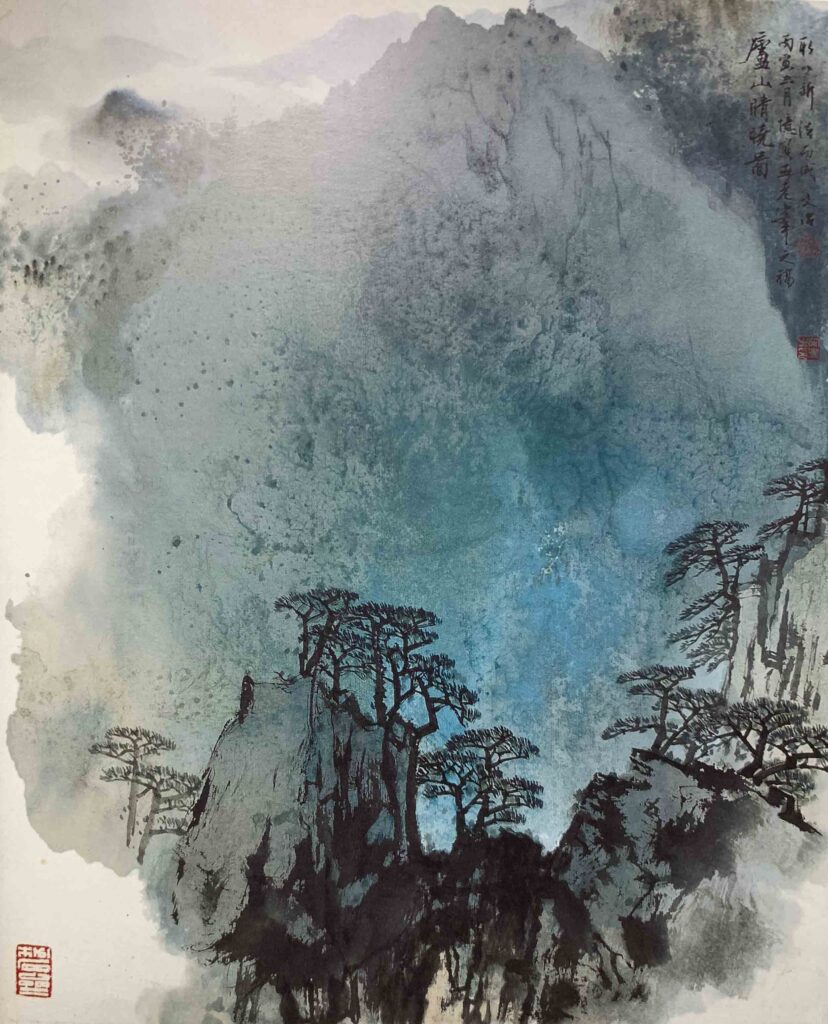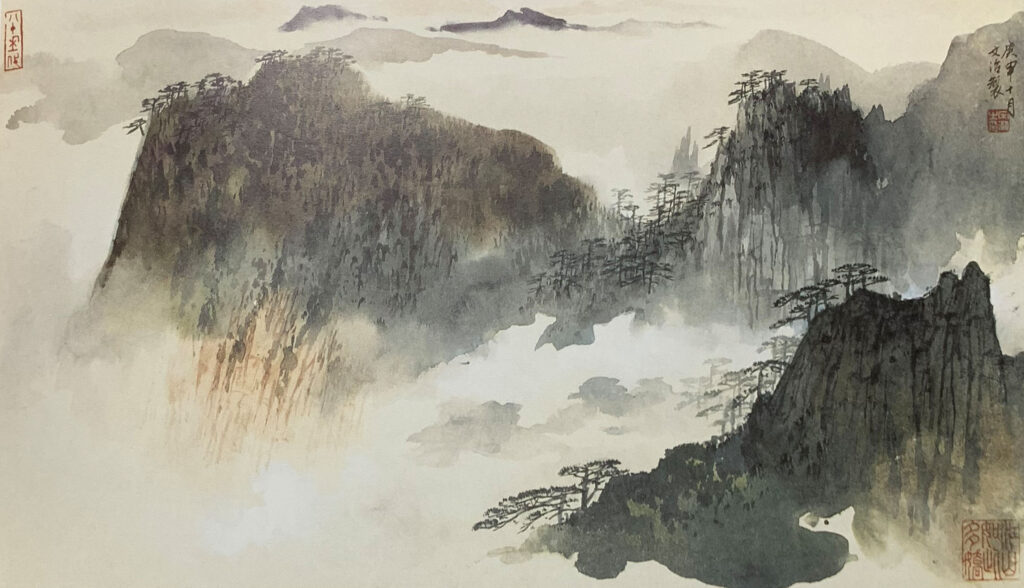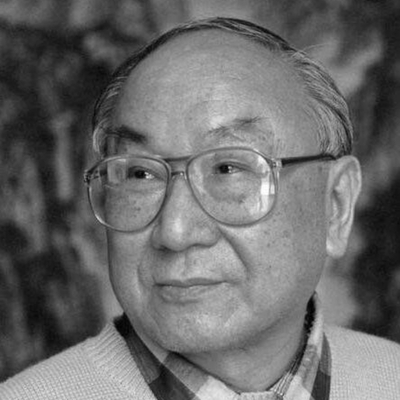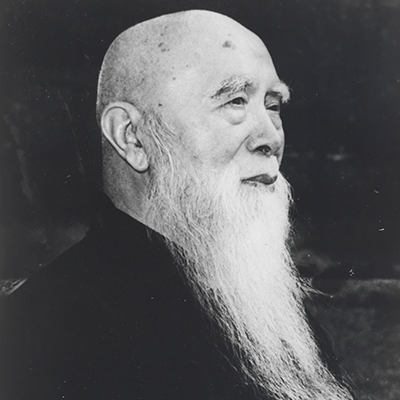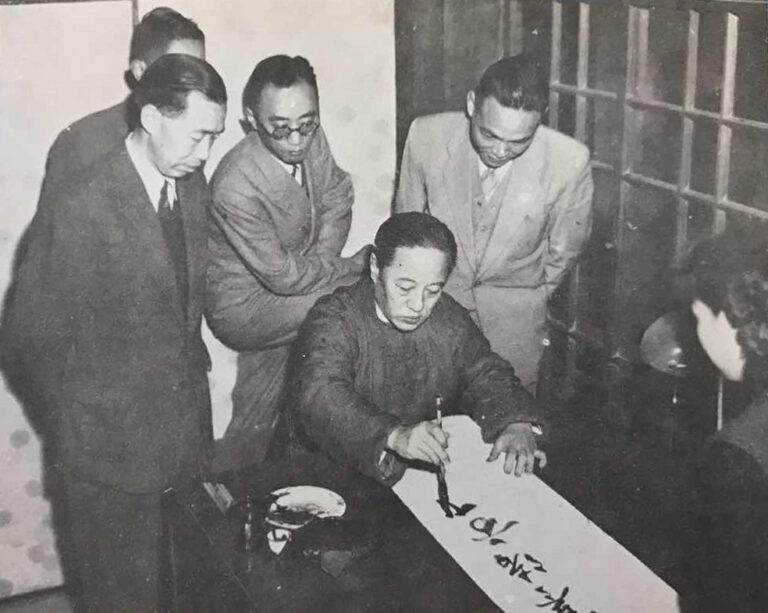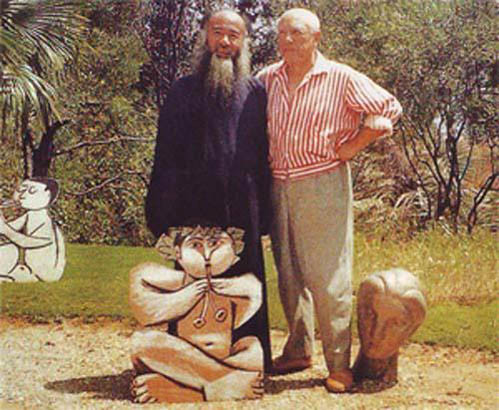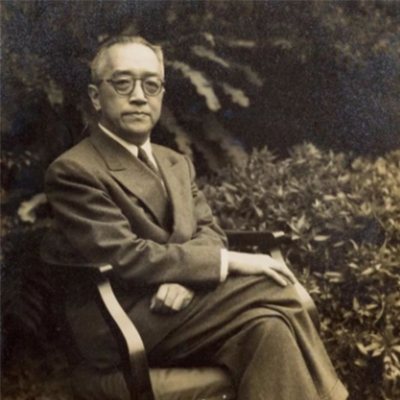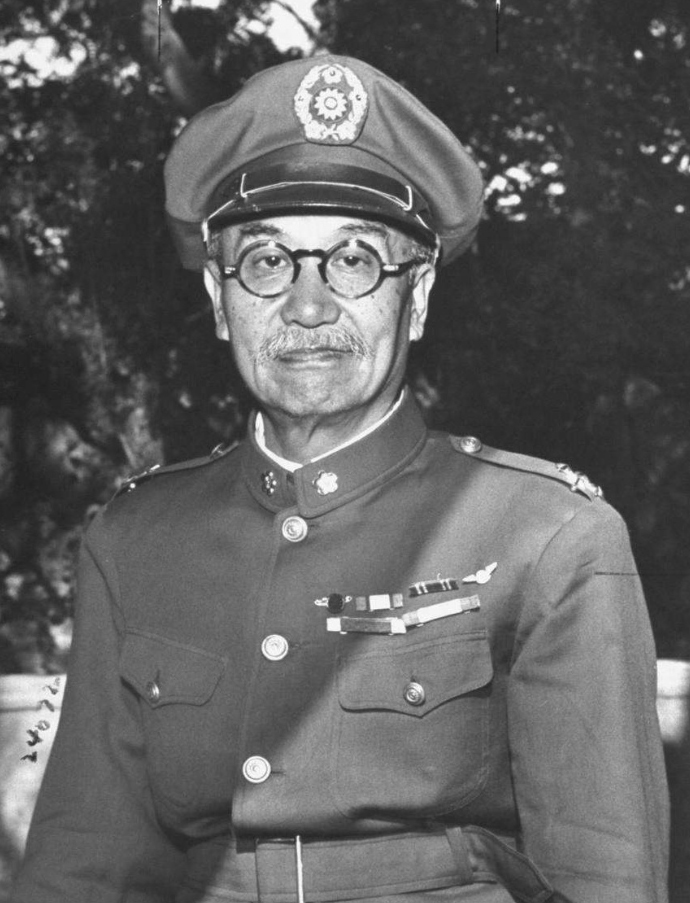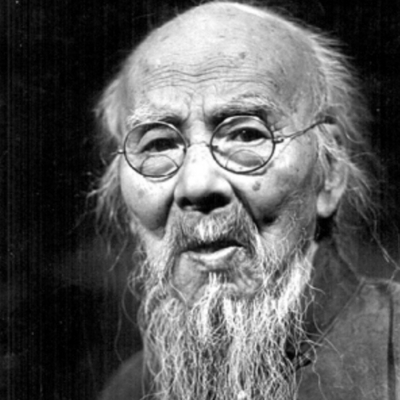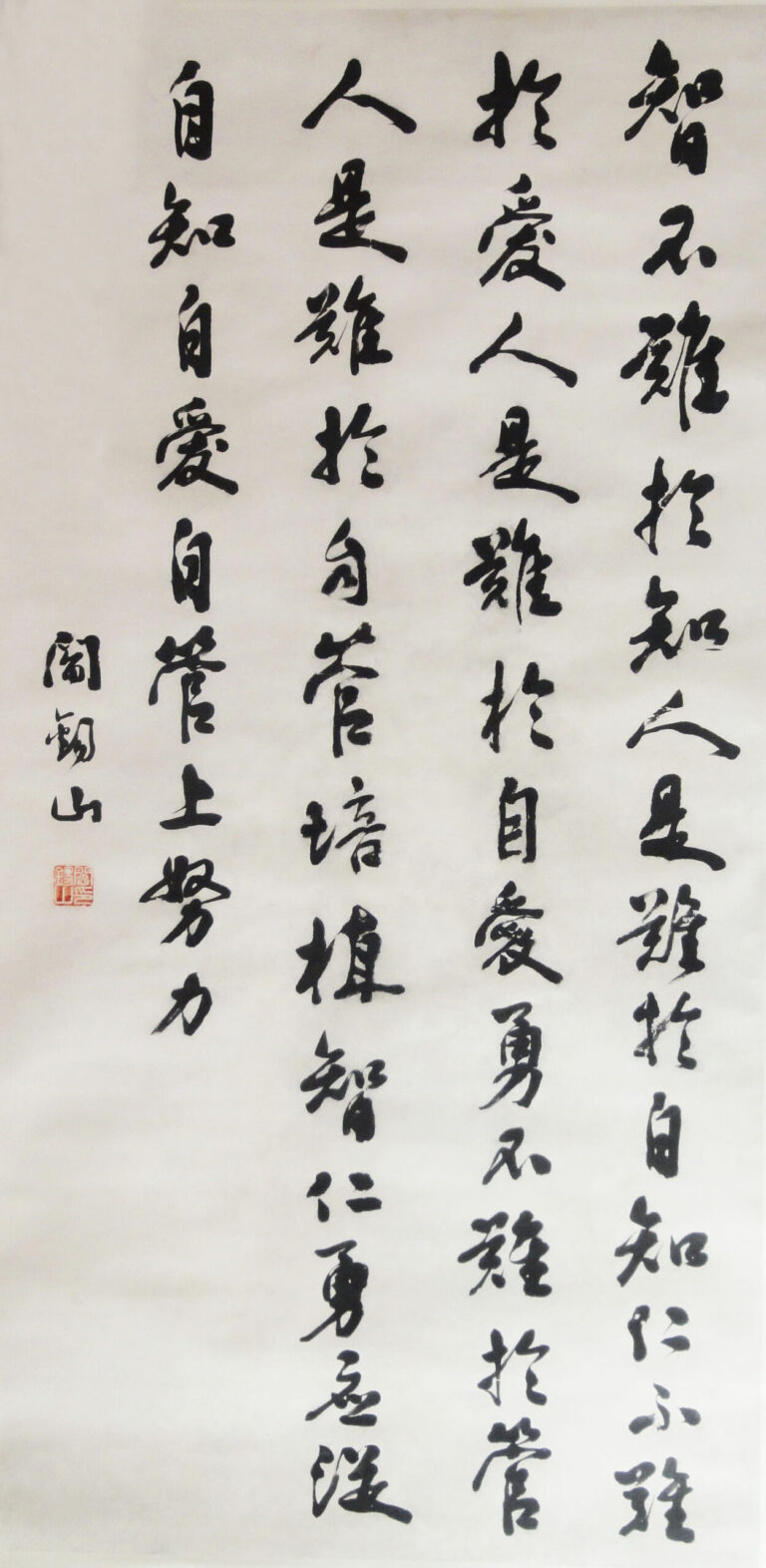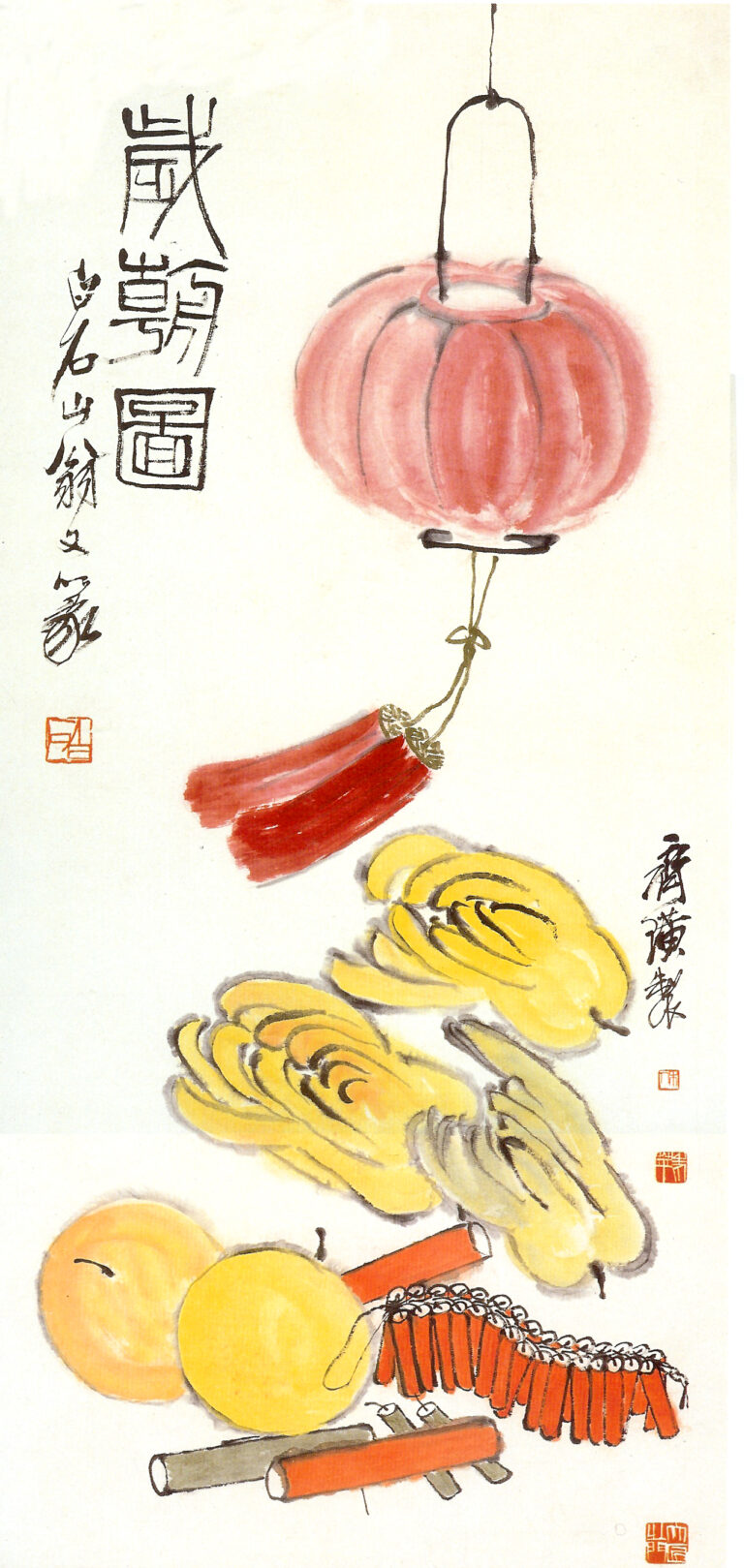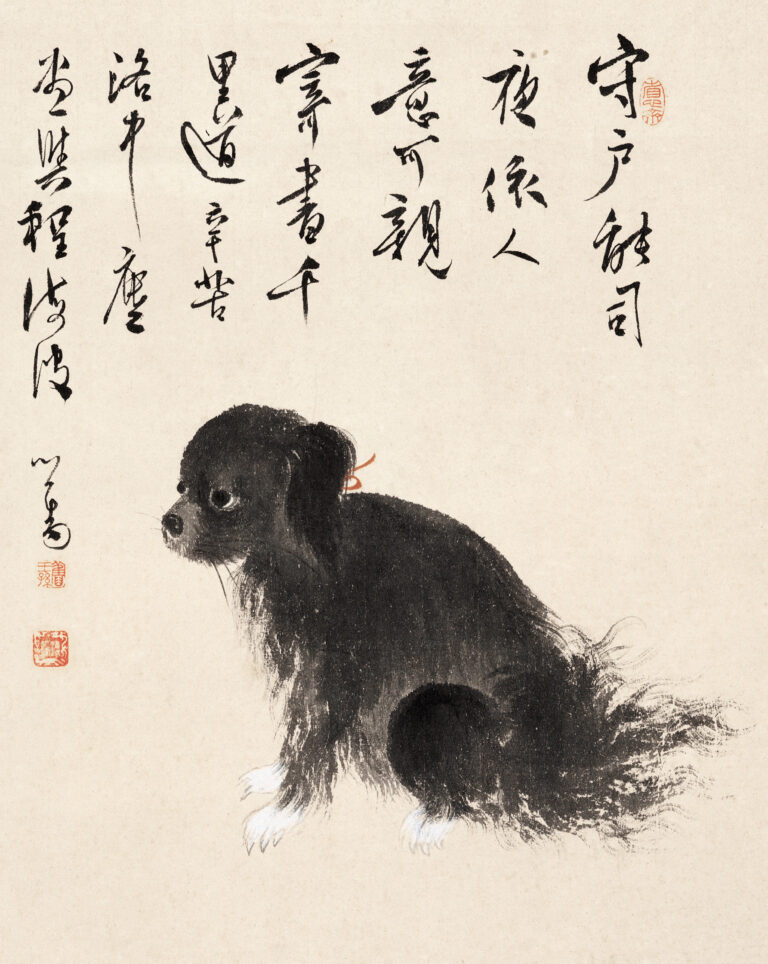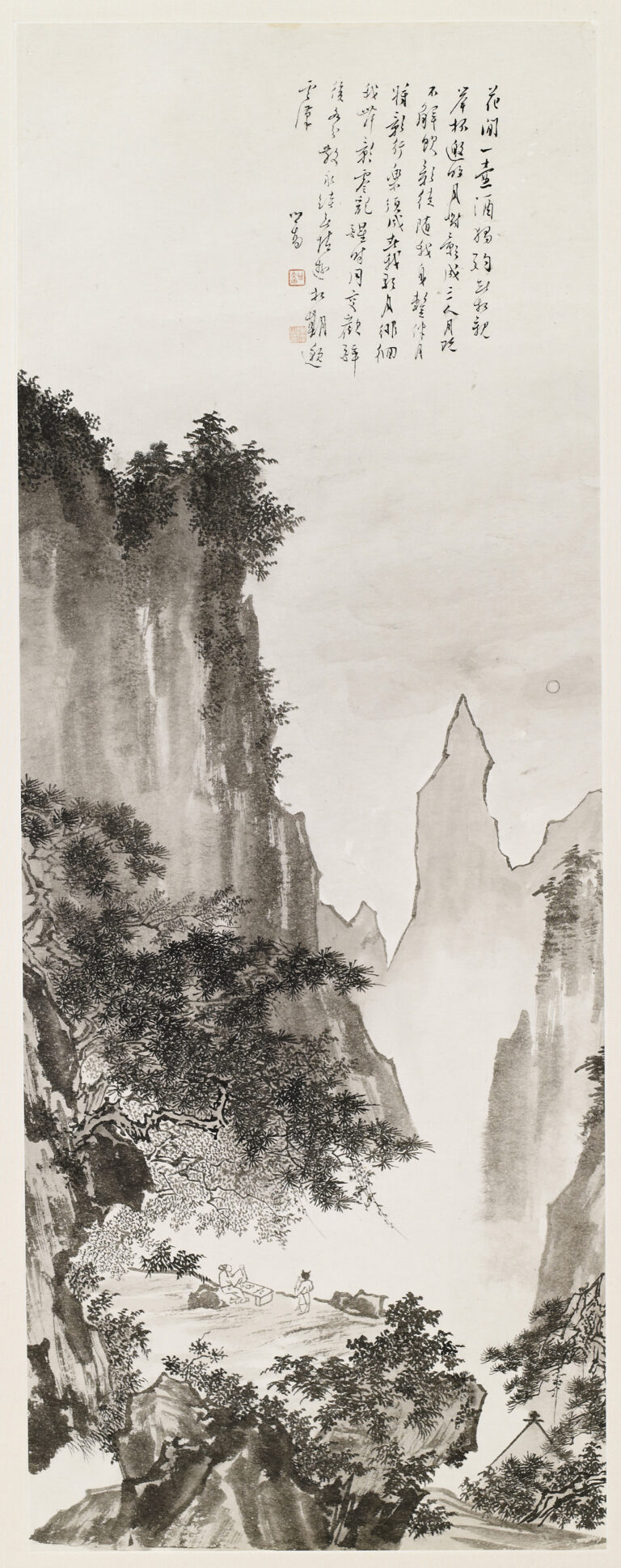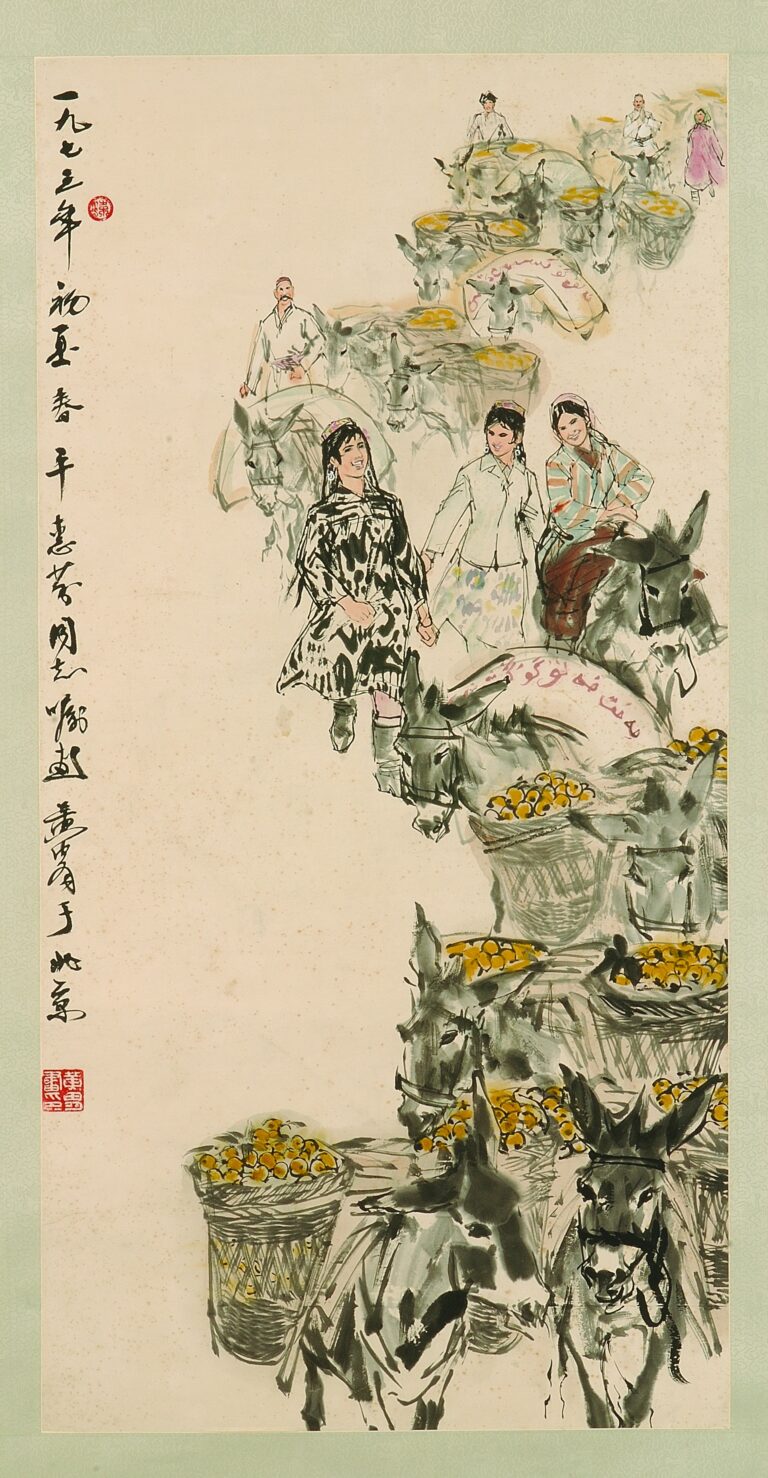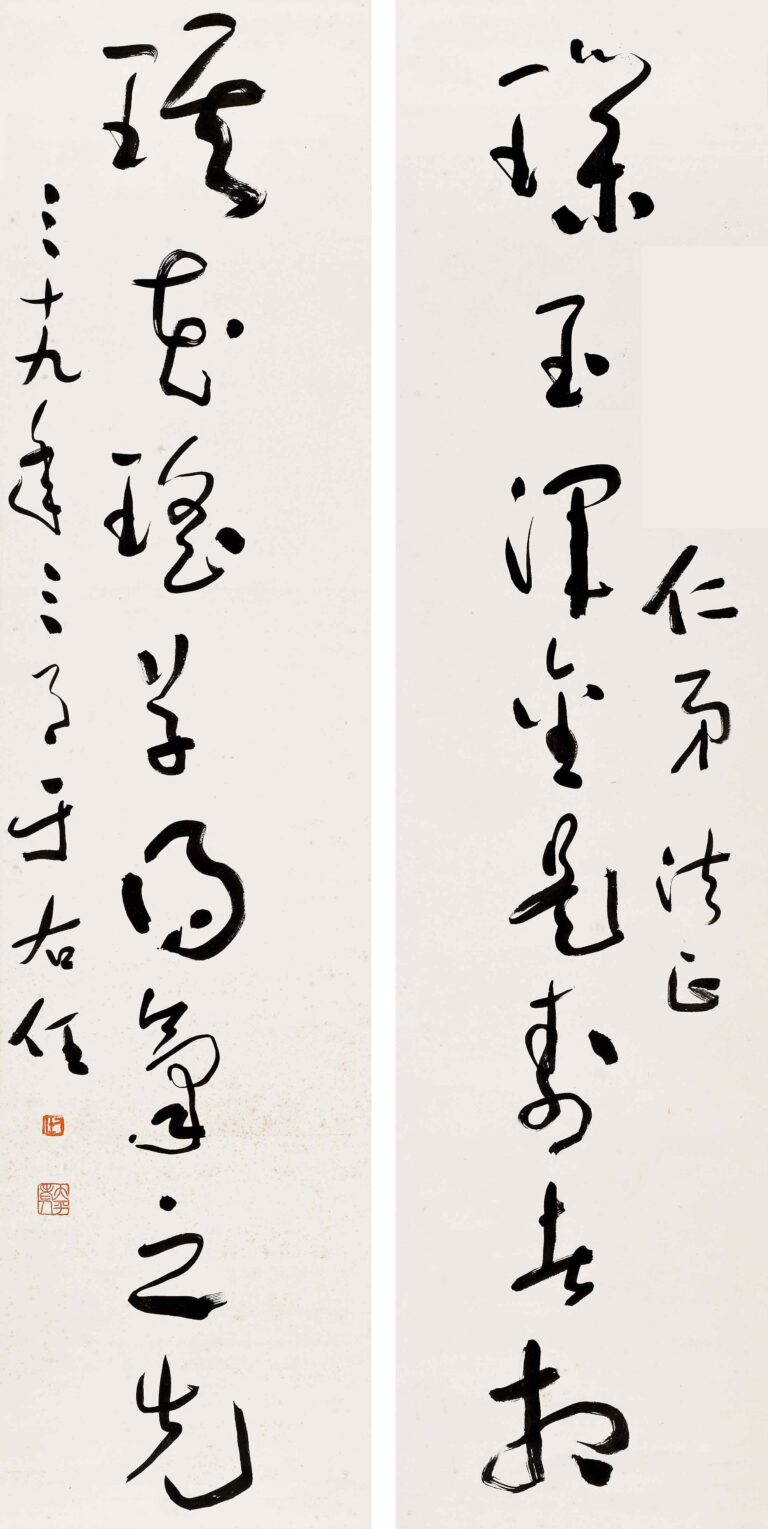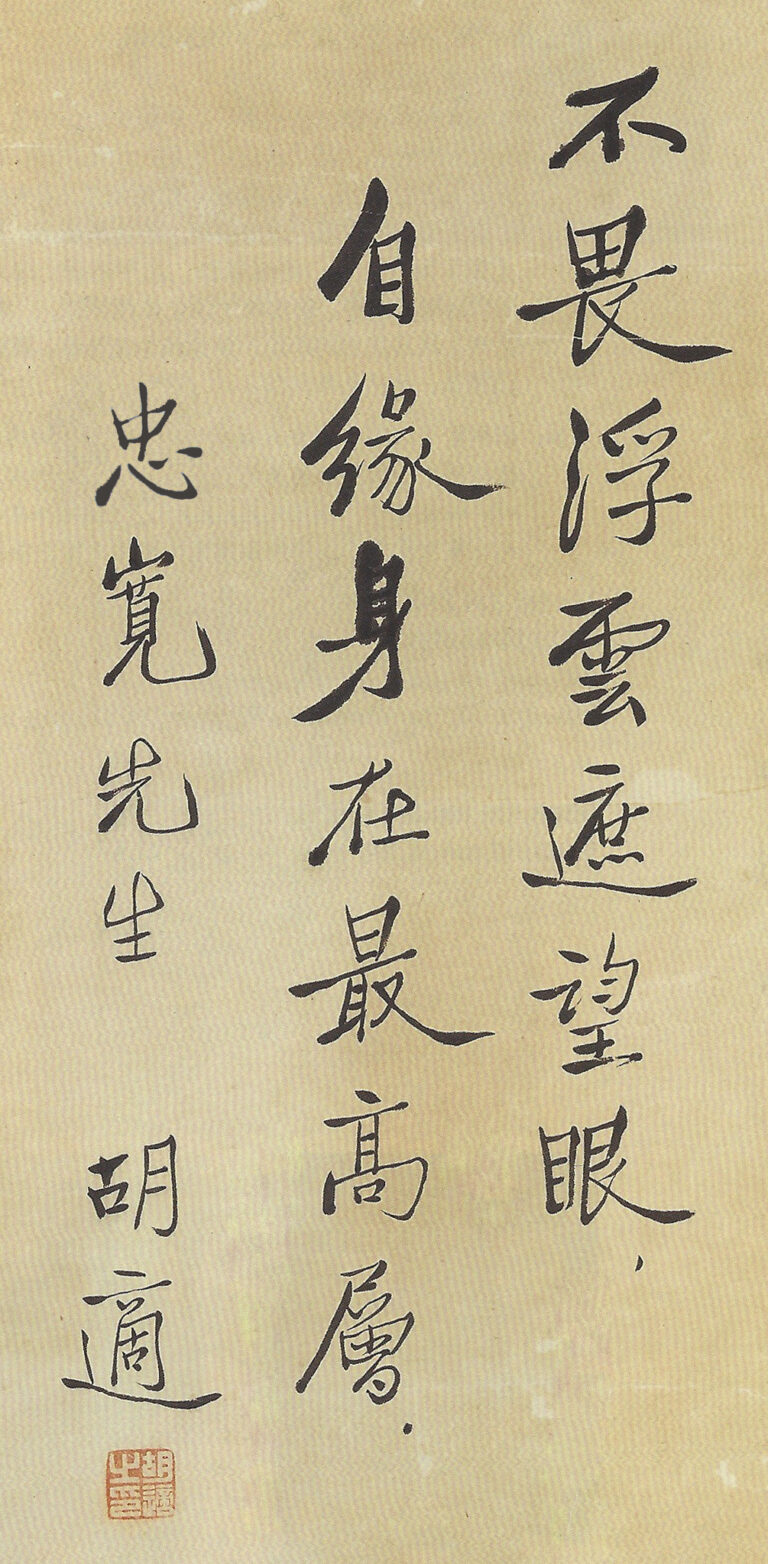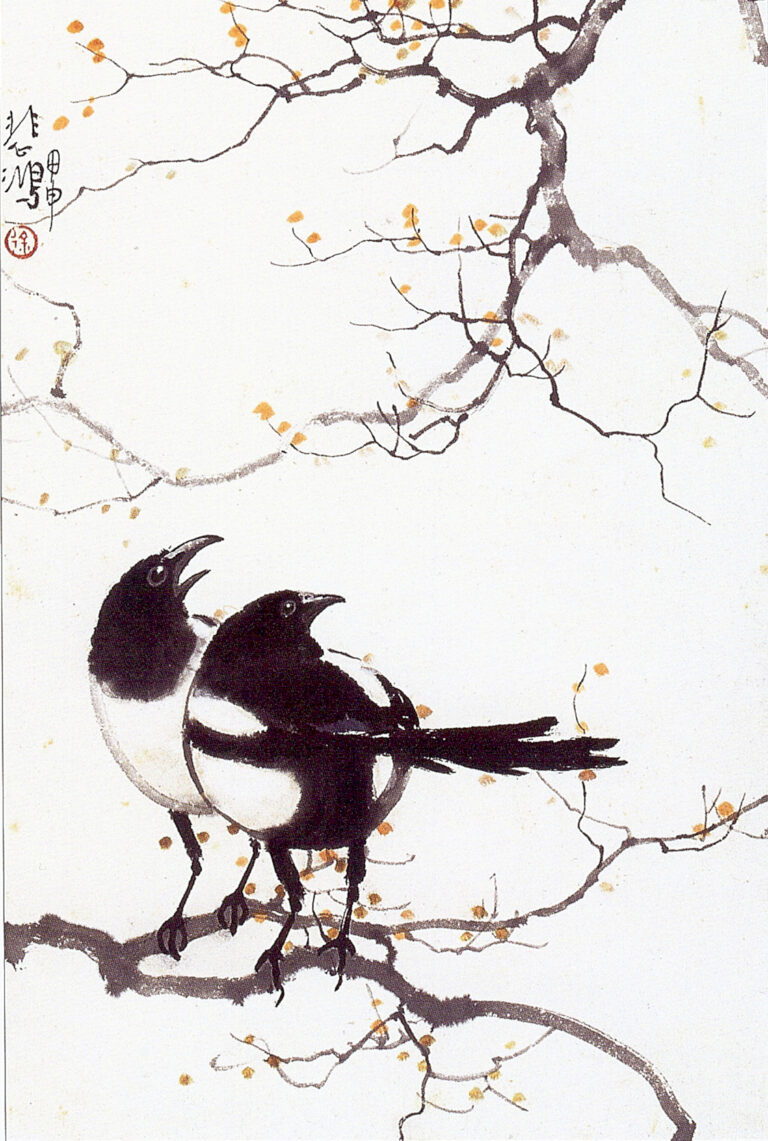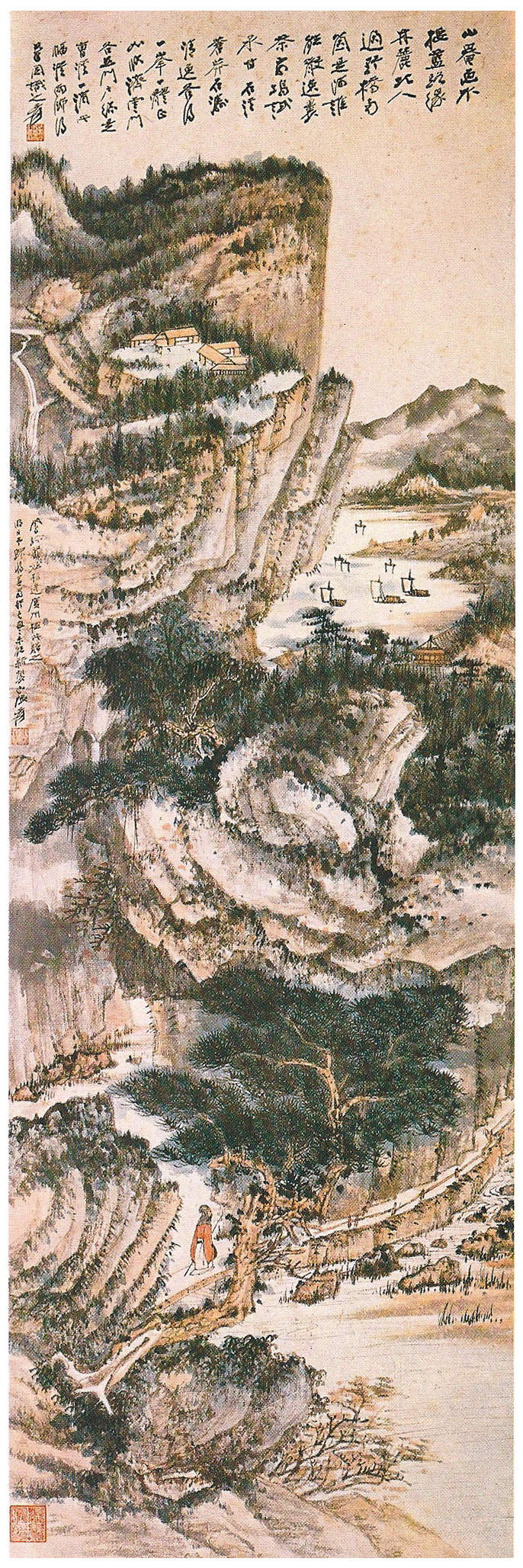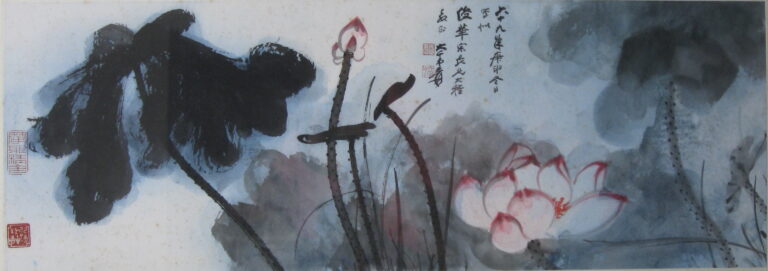In the history of modern Chinese painting, Song Wenzhi was a deeply influential master of Chinese painting. He tookPen and ink express the beauty of landscape, Entrusting the tenderness and magnificence of Jiangnan with his heart; he started from folk self-study and went through hardships to finally achieve a unique "Song School landscape". His artistic career is like a long scroll of rich landscapes, magnificent and infinite scenery.
Song WenzhiOrdinary birth but lofty ambitions
Song Wenzhi (1919-1999), Born in Taicang, Jiangsu, a land of fish and rice in the south of the Yangtze River, in October 1919. This land with deep cultural accumulation has been the cradle of famous calligraphy and painting masters since ancient times. Song Wenzhi, who was bereaved at an early age, although his family background was cold, he showed amazing artistic talent under the careful care of his adoptive parents. In elementary school, his artistic achievements were always among the best, and he was selected for the International children's painting exhibition with his outstanding watercolor and sketching works.
In his hometown, Song Wenzhi hungrily copied "Mustard Seed Garden Painting Score" and began to imitate and explore the "Four Kings" style of painting (Wang Shimin, Wang Jian, Wang Hui, Wang Yuanqi). This deep traditional foundation has become an important background for his future creations.
From Shanghai to Suzhou: Broaden your horizons and lay the foundation
In 1935, at the age of 17, Song Wenzhi went to Shanghai and entered an advertising agency as an apprentice, studying fine art calligraphy and design, and initially came into contact with western art. At that time, Shanghai was an international metropolis with a blend of Chinese and Western cultures. French impressionism, British watercolor painting, German printmaking, and Japanese painting were all exhibited in major galleries. This one-and-a-half-year trip to "City University" opened his eyes and laid out his inclusive artistic vision.
After the outbreak of the War of Resistance in 1937, Song Wenzhi returned to his hometown and worked as an art teacher in Taicang Elementary School, insisting on self-study and copying. In 1941, with the support of his relatives and friends, he was admitted to Suzhou Art College and received systematic training in perspective, color, sketching, etc., which won the praise of Principal Yan Wenliang. However, due to the impact of the war, he had to return home again and concentrate on painting.
The four masters gathered: inherit the methods of the ancients and open the path of self
During the War of Resistance, Song Wenzhi actively visited the art world and sought extensive advice. He forged a friendship between teachers and students with Mr. Zhu Qizhan, and Mr. Zhu helped him with his title painting. Since 1947, he has been an art teacher at Anting Normal University for ten years. His life is stable and he has been able to concentrate on studying art.
During this period, he worshipped three famous masters Zhang Shiyuan, Lu Yanshao, and Wu Hufan as his teachers. Zhang Shiyuan helped him lay down a vigorous landscape brushwork; Lu Yanshao's innovative composition and landscape layout made him refreshing; Wu Hufan's elegant pen and ink, neat and rigorous, brought him the interest of literati painting. Inheriting from four famous masters, Song Wenzhi integrated hundreds of traditional landscape paintings on top of the deep heritage of traditional landscape painting and entered a mature period of artistic creation.
The emergence of the new Chinese painting scene
After 1949, Song Wenzhi devoted himself to the art of New China. His works such as "Tongjiang Raft" and "Huangshan Songyun" were selected for the second National Art Exhibition and began to emerge. He initiated the attempt to "express modern new life with Chinese painting pen and ink" and became an important forerunner in shifting Chinese painting from old themes to real life.
At the end of the 1950s, Song Wenzhi was transferred to the Jiangsu Academy of Chinese Painting and joined Fu Baoshi, Qian Songyuan, Yaming and others to explore a new path of Chinese painting. His works "Nanjing Petrochemical Plant", "Splitting Mountains to divert water", "New Appearance of Jingkou", etc., have both powerful pen power and a living atmosphere, adding brilliance to his artistic career.
Going to the country and the world: Traveling and Changing Laws
In 1960, Jiangsu Academy of Chinese Painting was officially established. In that year, Fu Baoshi led Jiangsu painters south to Guangdong, Chaoshan and other places, sketching thousands of miles, and Song Wenzhi participated in the whole process. This journey deep into nature and life has made a qualitative leap in his painting style. He integrated western watercolor and gouache techniques into Chinese painting, creating a new way of color expression. The masterpieces "Huayue Towering into the Sky", "Great Changes in Mountains and Rivers" and "Guangzhou Shipyard" were all new works that attracted the attention of the art world at that time.
Since then, he has continued to deepen his life, creating classics such as "Shaoshan", "Hongyan" and "Du Fu Thatched Cottage", creating a new realm of landscape painting that combines realistic spirit and poetic beauty.
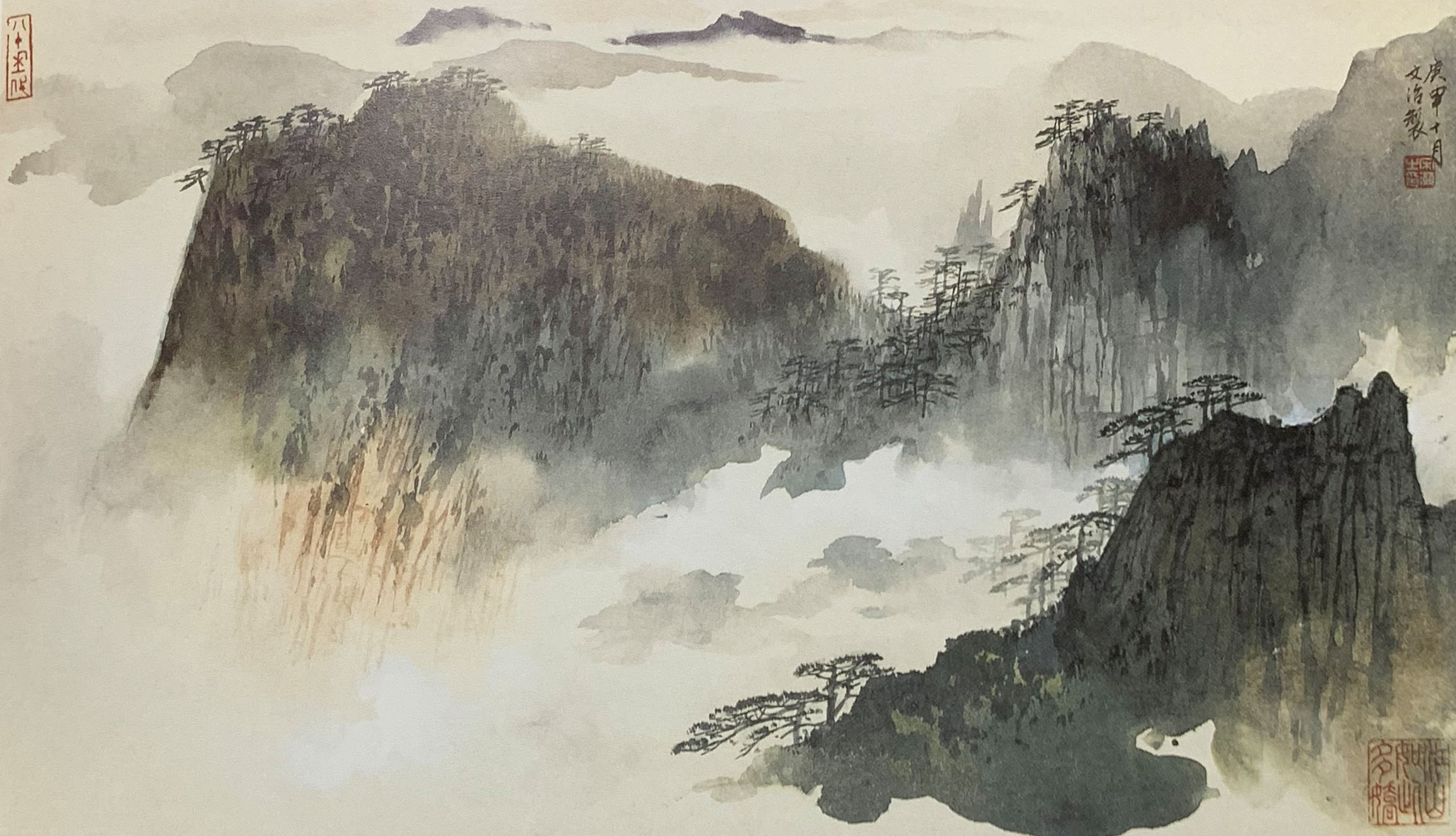
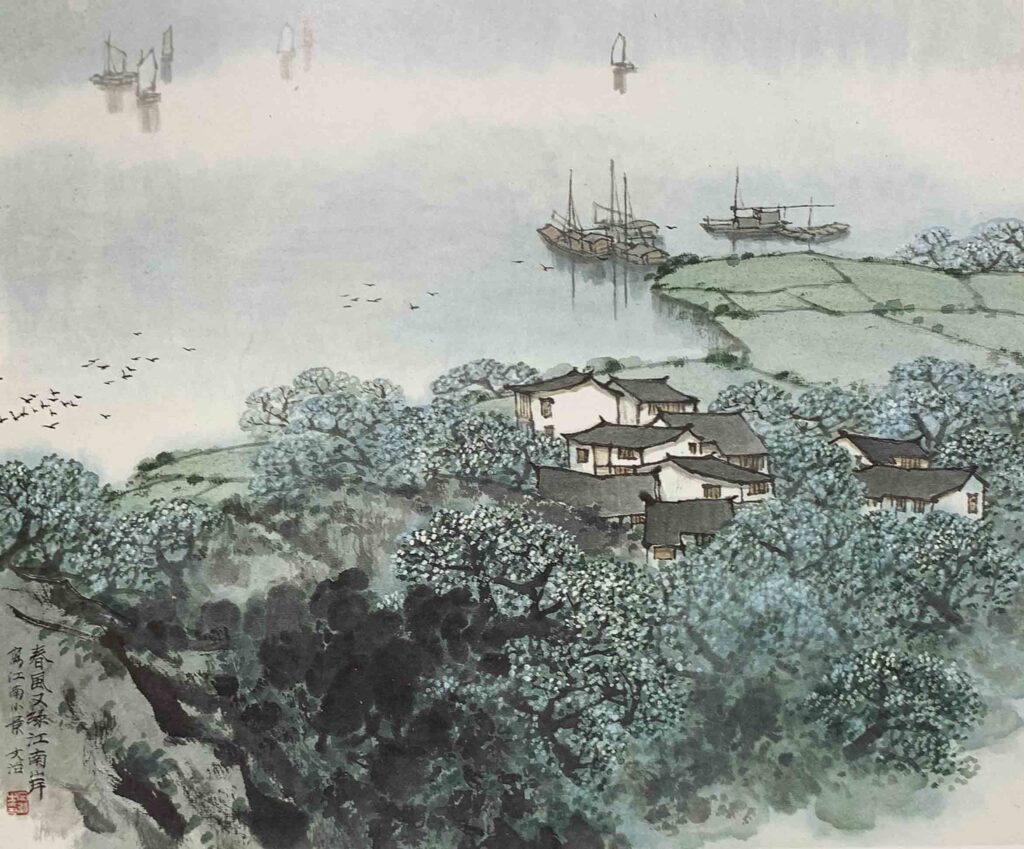
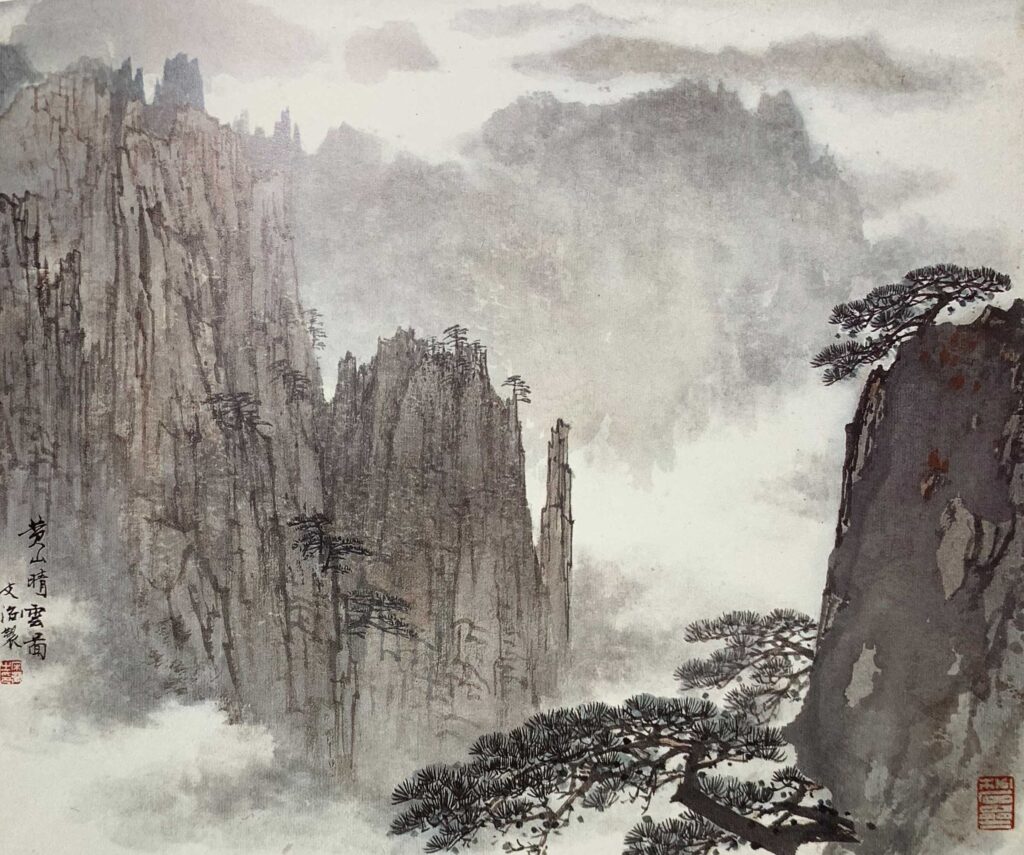
Song WenzhiThe Peak of Art: Jiangnan Poetry and Song School Landscape
It was his Jiangnan water town that truly formed the "Song Wenzhi style". Since the 1960s, he has focused on depicting the scenery of Jiangnan water towns and Taihu Lake, combining traditional pen and ink techniques with the vivid feelings of life. The masterpiece "Jiangnan Spring Tide" and "The Shore of Taihu Lake" have fresh pen and ink, clever composition, light turquoise tones are rendered in layers, peach blossom and white, and the spring light of Jiangnan is like poetry and painting. As he said: "Poetry is picturesque, painting is like poetry", the blend of poetry and painting is the unique charm of his landscape painting.
Reputation and Glory: From China to the world
In 1979, Song Wenzhi participated in the "Jinling Eight Family Painting Exhibition" in Hong Kong. The changes and breakthroughs in his painting style attracted attention. For more than ten years since then, he has frequently held painting exhibitions at home and abroad, and his reputation has spread far and wide. His works are collected by art museums in Japan, Singapore, the United States and other places. In 1981, the Chinese Artists Association held the "Song Wenzhi Painting Exhibition" at the National Art Museum of China. Ye Qianyu presided over the symposium, which was reported by media from all walks of life.
Song Wenzhi's works are highly respected by collectors all over the world for their fresh and handsome Jiangnan poetry, deep traditional skills and innovative spirit of the times, and have become an important business card for Chinese landscape painting on the world stage.
Indifferent in old age, elegant feelings
In his later years, Song Wenzhi was knowledgeable and versatile, and he was happy to learn and share with young painters. He not only talked about the integration of Chinese and western art, but also deeply held the insight of "foreign for Chinese use", advocating that Chinese painting should be brave and innovative, and not stand still. In 1985, he was elected as the vice chairman of the Jiangsu International Cultural Exchange Center and served as a tenured adjunct professor at the Oriental Arts Center of Nanjing University. The Fourth Congress of the Chinese Artists Association elected him as a director, which is a great affirmation of his artistic attainments and personality.
Art and Spirit: the Style of a generation of masters
Song Wenzhi used poetic brushstrokes to give new life to the Jiangnan landscape; with its deep traditional heritage, he created a new realm of Chinese painting with a unique sense of the times. His life is an important witness to the transition of Chinese painting from tradition to modernity; his works are the crystallization of the fusion of Chinese landscape spirit and modern aesthetics.
He said: "You must dare to deny yourself in order to make continuous progress. "It is this kind of dedication to art and the courage to constantly challenge oneself that have made Song Wenzhi the legendary life of a landscape master.
Dehuatang sincerely invites collectors to join the event
If you have precious calligraphy and painting works by Mr. Song Wenzhi in your collection, Dehuatang sincerely invites you to contact us. We have long acquired famous modern and modern Chinese calligraphy and painting at high prices, and professionally preserve and respect every piece of art treasures, so that Song Wenzhi's poetic style and artistic spirit can be spread sustainably in the world.
Portfolio
